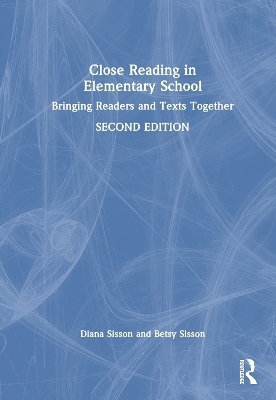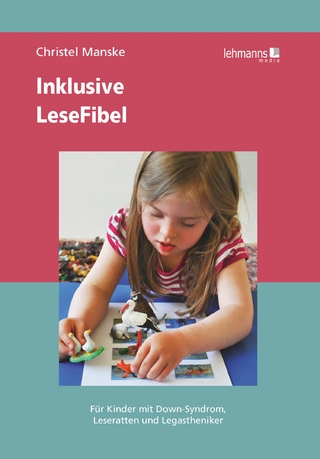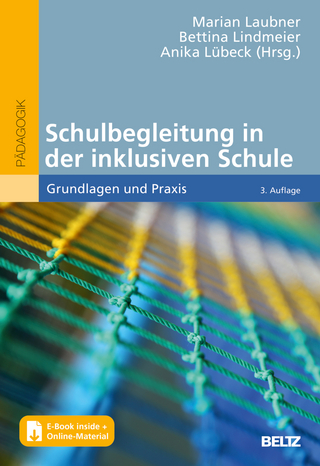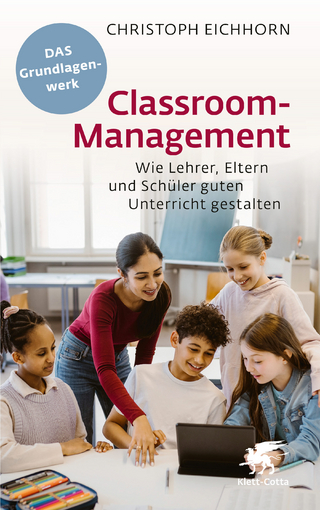
Close Reading in Elementary School
Routledge (Verlag)
978-1-032-52893-9 (ISBN)
Many literacy experts believe close reading has the power to create strong, independent readers, but what does that really mean, and how does it work in the classroom? This book is your must-have guide to getting started! It provides step-by-step strategies and scaffolds for teaching close reading and improving students’ comprehension of complex texts. You will learn how to teach close reading based on text type, how to accelerate learning through increasingly challenging texts in both print and digital media, how to use close reading as a springboard for close talks and close writes, and how to support your students to move forward confidently with a repertoire of tools to employ as they navigate complex text in their daily lives.
Special Features:
A clear explanation of what text complexity really means and how it varies by student
An easy-to-use framework for creating a close reading lesson that builds student reading stamina
Scaffolds to help students at all ability levels to do a close reading
Close reading strategies for a variety of literary and informational genres
Ideas for strengthening reading through targeting comprehension skills, including analyzing text structure and evaluating arguments
Suggestions for helping students read with increasing levels of rigor
Techniques for how to lessen student technology distractions and dig deeper into digital text
Guidelines and procedures for close talks – purposeful, focused discussions about text
Procedures for close writes that vary based on genre and student ability level
Recommendations to ensure students have the close reading skills to be effective readers in and out of the classroom
In addition, each chapter includes study guide questions to help you apply the ideas in the book to your own classroom. With this practical book, you will have all the tools you need to make close reading a reality!
Diana Sisson and Betsy Sisson, Ed.D.s, are international literacy consultants focusing on professional development and school improvement. They also serve as adjunct professors in the fields of teacher preparation, curriculum and instruction, educational research in literacy, and literacy instruction.
Preface
Meet the Authors
PART I Understanding Close Reading
Chapter 1 Defining Complex Text in the Classroom
Why Is Text Complexity a Significant Factor in Reading Instruction Today?
Measuring Text Complexity
The Essence of Text Complexity
Summary
Book Study: Reflection Questions
Chapter 2 Close Reading: Historical Perspectives and Contemporary Practices
Historical Context
Close Reading Comes to American Classrooms
Reader Response Theory
The Return of Close Reading
Summary
Book Study: Reflection Questions
Part II Close Reading in the Classroom
Chapter 3 An Overview of Close Reading Strategies
Ten Steps to Creating a Close Reading Lesson
Plan the Implementation
Scaffold the Process
Summary
Book Study: Reflection Questions
Chapter 4 Reading Across Literary and Informational Genres
Literary Genres
Informational Genres
Summary
Book Study: Reflection Questions
Chapter 5 Strengthening Reading Through Targeted Comprehension Skills
Reading for Details Using Both Literal and Inferential Understanding
Theme, Main Idea, and Summarization
Narrative Elements
Text Structure
Point of View
Diverse Text Formats and Media
Evaluate Arguments in Text
Comparing and Contrasting Multiple Texts on the Same Topic
Summary
Book Study: Reflection Questions
Chapter 6 Accelerating Learning With Increasing Levels of Rigor
Bloom’s Taxonomy
Webb’s DOK Levels
Differentiating Academic Rigor
Summary
Book Study: Reflection Questions
Chapter 7 Looking Deeper at Digital Text
Evolution of Reading
The Digital Brain
Delving Into Digital Texts
Academic Benefits of the Social Aspect of Reading
The Use of Writing as a Physical Interaction With Digital Learning
Summary
Book Study: Reflection Questions
Part III Linking Close Reading With Close Talks and Close Writes
Chapter 8 Using Close Talks to Deepen Understanding
The Power of Questioning
Close Talks
Text
Questions
Students
Teacher
Preparing a Close Talk
Guidelines for Participating in a Close Talk
Close Talk Procedure
Close Talk Participation Rubric
Benefits of Close Talk
Summary
Book Study: Reflection Questions
Chapter 9 Close Writes as a Springboard Into Student-Generated Writing
Reading-Writing Connection
The Close Write Model
Summary
Book Study: Reflection Questions
Chapter IV The Independent Reader
Chapter 10 Building the Independent Reader
The Power of the Gradual Release of Responsibility
Teacher Modeling
Interactive Think Alouds
Guided Use of Whole-Class Close Reading Framework With Shared Text
Differentiating the Close Reading Process in Small Groups and Paired Reading
Using Feedback to Elevate Student Thinking
The Independent Reader
Closing Thoughts on the Transformational Effect of Close Reading
Summary
Book Study: Reflection Questions
References
| Erscheinungsdatum | 08.03.2024 |
|---|---|
| Zusatzinfo | 33 Line drawings, black and white; 3 Halftones, black and white; 36 Illustrations, black and white |
| Verlagsort | London |
| Sprache | englisch |
| Maße | 178 x 254 mm |
| Gewicht | 1140 g |
| Themenwelt | Schulbuch / Wörterbuch |
| Sozialwissenschaften ► Pädagogik ► Schulpädagogik / Grundschule | |
| ISBN-10 | 1-032-52893-1 / 1032528931 |
| ISBN-13 | 978-1-032-52893-9 / 9781032528939 |
| Zustand | Neuware |
| Haben Sie eine Frage zum Produkt? |
aus dem Bereich


